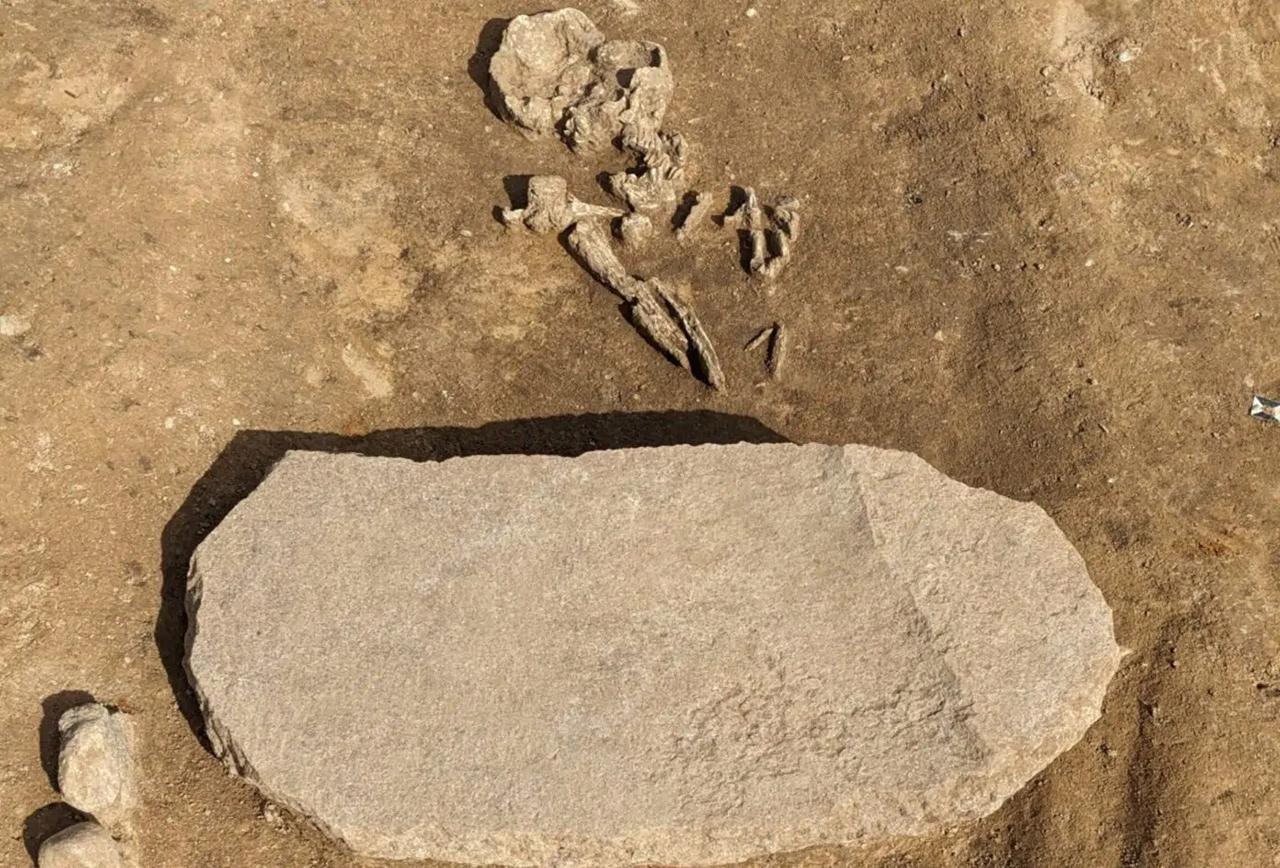Archaeologists conducting excavations near Oppin, Germany, have uncovered an ancient grave dating back approximately 4,200 years. The burial site, labeled a “zombie grave” by experts, was found during excavations preceding the expansion of the Südostlink direct current line, a project spanning 93 miles through Saxony-Anhalt, scheduled for archaeological examination until 2025.
 4,200-year-old “zombie grave.” Credit: State Office for Heritage Management and Archaeology Saxony-Anhalt, Anja Lochner-Rechta
4,200-year-old “zombie grave.” Credit: State Office for Heritage Management and Archaeology Saxony-Anhalt, Anja Lochner-Rechta
The grave, discovered by archaeologists from the State Office for Heritage Management and Archaeology Saxony-Anhalt, contains the remains of a man believed to have been between 40 and 60 years old at the time of his death. He belonged to the Bell Beaker culture, a Bronze Age group that emerged around 2800 BCE and dispersed across Western Europe and parts of northwestern Africa.
The burial, positioned on its left side with legs bent and facing east, featured a significant anomaly: a large stone placed atop the lower half of the man’s body. This stone, approximately three feet long, 20 inches wide, and four inches high, served as a preventive measure against the deceased returning as a revenant, an animated corpse feared in various mythologies and folklore across Europe.
Susanne Friederich, project manager, and archaeologist, explained, “We know that even in the Stone Age, people were afraid of revenants. Back then, people believed that ᴅᴇᴀᴅ people sometimes tried to free themselves from their graves.”
 Credit: State Office for Heritage Management and Archaeology Saxony-Anhalt, Anja Lochner-Rechta
Credit: State Office for Heritage Management and Archaeology Saxony-Anhalt, Anja Lochner-Rechta
The presence of such a burial custom among the Bell Beaker culture is unusual, indicating a deep-rooted fear of the ᴅᴇᴀᴅ among Bronze Age Europeans. Similar practices have been documented in various historical periods, including Roman literature, where dismemberment of the body was employed to prevent resurrection. Similarly, a recent discovery in Italy unearthed a Roman cemetery containing the remains of a child with a block in their jaw, reflecting the widespread fear of revenants during that era.
Recent excavations in the Oppin region have unveiled another possible revenant burial from the 2nd or 3rd century, marked by the placement of three large stones on the individual’s legs. The presence of bronze fibula in this grave suggests the individual was not impoverished. Additionally, nearby discoveries, including the skeletal remains of a woman without any measures against revenants, and the outline of a house, suggest a potential connection between these individuals and their living environment.
As archaeologists continue their work, they convey skeletal remains to laboratories for further analysis.





